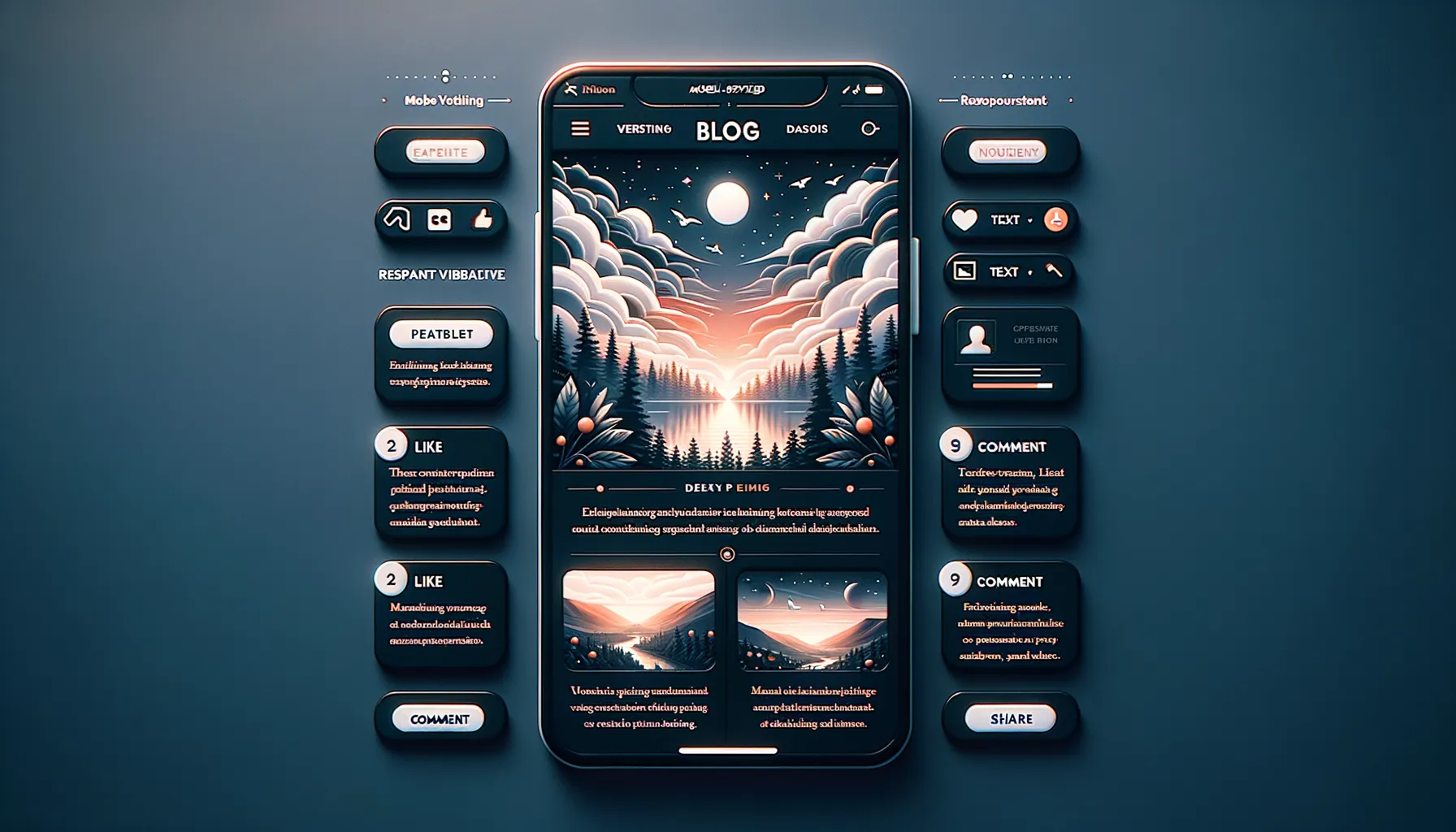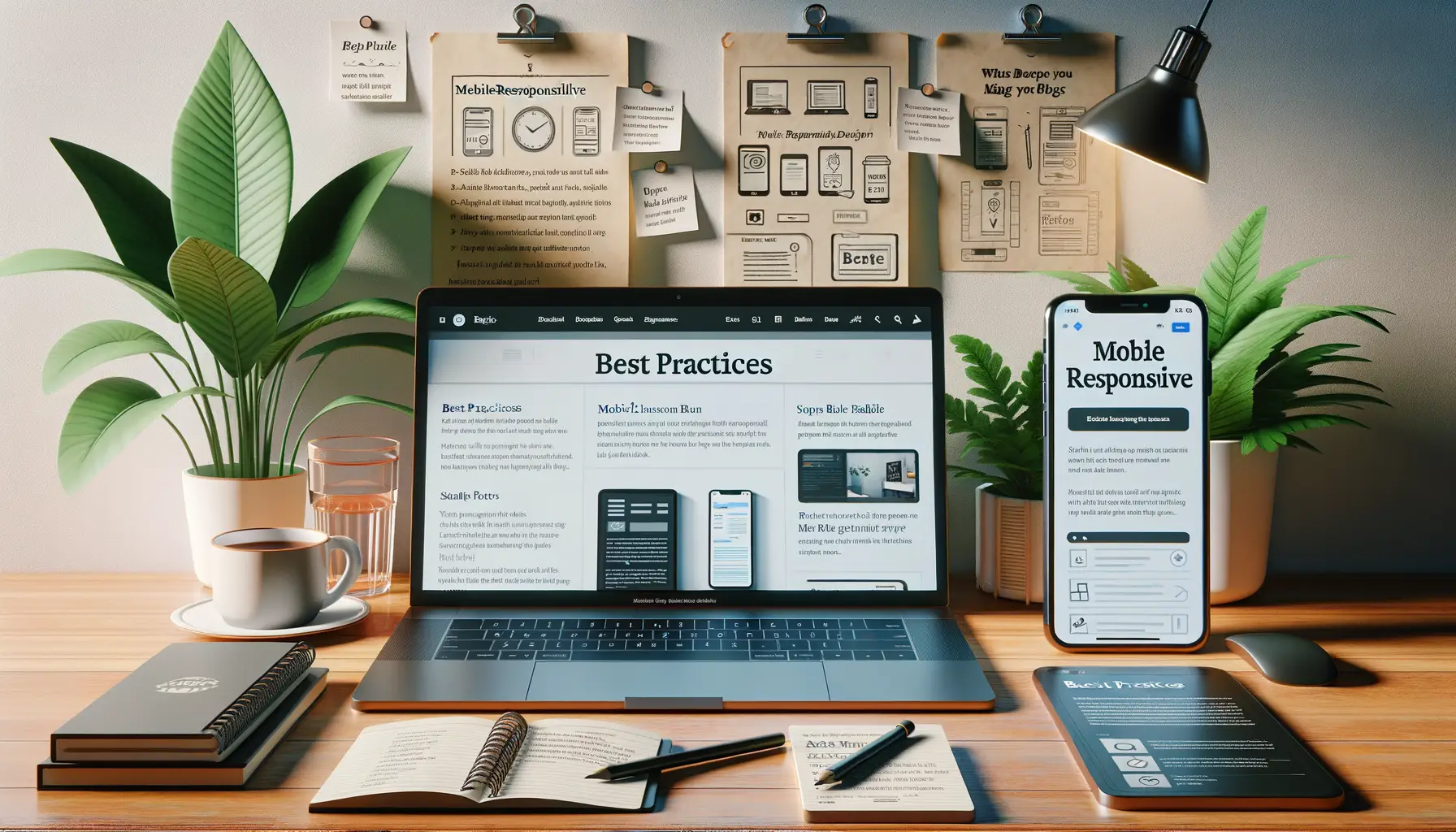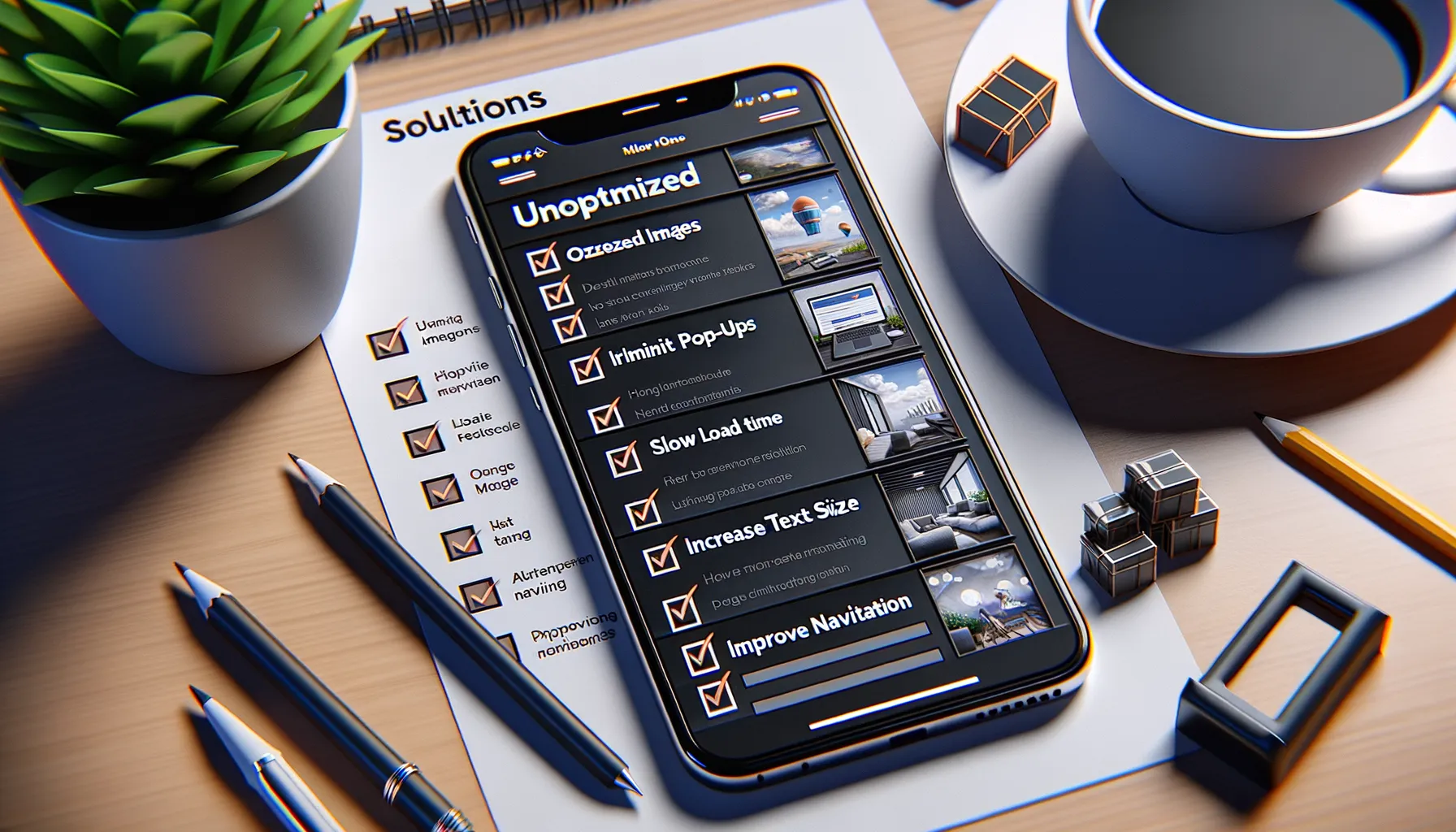Why Mobile-Friendly Layouts Are Crucial for SEO
Think About Your Readers on the Go
Picture this: your reader is standing in line for coffee, scrolling on their smartphone, trying to devour your content while balancing a pastry in the other hand. If your blog layout isn’t mobile-friendly, their experience can go from delightful to downright frustrating in seconds. Pinch-to-zoom text? Buttons the size of a grain of rice? Forget it—they’ll bolt faster than that latte order gets called out.
Mobile users are impatient. They demand speed, clarity, and ease of navigation. Search engines know this too, which is why Google prioritizes mobile-first indexing. This means Google primarily evaluates your site based on its mobile version, not its desktop design. If your layout isn’t optimized for smaller screens, your search rankings could sink like a stone.
- Slow load times: Kiss your audience (and SEO rankings) goodbye if your site drags.
- Clunky navigation: Users won’t hunt for content—it should feel as intuitive as flipping pages in a favorite book.
- Unreadable fonts: Tiny text equals tiny chance anyone will stick around.
Remember, creating a seamless mobile experience isn’t just about machines; it’s about connecting with actual humans wherever they are.
Key Elements of a Mobile-Optimized Blog Layout

Think Like Your Audience: Scrolling Made Simple
Picture this: someone’s hunched over their phone on a packed subway, trying to read your blog. If your layout isn’t designed for thumbs and tiny screens, you’ve already lost them. A mobile-optimized blog layout starts with simplicity. You need spacing that lets people scroll effortlessly—no pinching or zooming necessary.
Here’s the secret sauce:
- Readable fonts—say goodbye to squinting; aim for at least 16px.
- Generous white space—it gives eyes a break and makes content digestible.
- Clickable buttons—nobody wants to miss a link because it’s too tiny.
Always test your designs with one question in mind: Would you want to interact with this on the go?
The Joy of Speed and Balance
Let’s talk speed—because nothing kills interest faster than a slow-loading page. Images should load like lightning no matter how gorgeous they are. Compress them without sacrificing quality; tools like TinyPNG can be your best friend here.
And balance? Oh, it’s magical. Strike the perfect harmony between visuals and text. A killer example? Instead of cluttering the screen with endless paragraphs, break things up with headers, images, or even playful icons. This keeps readers hooked while subtly guiding them toward your next big idea.
Best Practices for Creating Mobile-Responsive Blog Designs

Designing for Thumbs, Not Just Eyes
Let’s be honest: nobody wants to pinch and zoom their way through your blog. The modern reader wants effortless scrolling and navigation, and that means designing with mobile users in mind. Think of your layout like a cozy coffee shop—it should feel welcoming and easy to navigate, no matter the screen size.
One key tip? Prioritize finger-friendly navigation. Buttons and links need to be big enough for a thumb tap—no one enjoys mistakenly opening the wrong link because it’s microscopic! A good rule of thumb (literally): make clickable areas at least 48×48 pixels.
- Font sizes matter: No one’s squinting at tiny text on their smartphone. Stick to 16px or higher for body text.
- Keep content bite-sized: Break up long paragraphs. Short, snappy sentences are easier to digest when scrolling on a small screen.
Flexibility Is the Secret Sauce
Here’s the golden ticket: invest in a responsive design framework. This ensures that your blog automatically adjusts based on screen size—like an outfit that magically tailors itself to fit every wearer. Frameworks like Bootstrap or CSS Grid make it simple.
Oh, and don’t forget images! Use formats like WebP and set your images to scale fluidly, so they don’t end up ruining your layout. Bonus points for compressing them to keep loading speeds fast because, trust me, nobody’s waiting 10 seconds for a photo to load.
Common Mistakes in Mobile Optimization and How to Avoid Them

Overloading Pages with Heavy Elements
Ever tried pouring an entire gallon of milk into a tiny glass? That’s what happens when your mobile blog is stuffed with oversized images, flashy animations, and clunky scripts. It’s a surefire way to send your readers scrambling for the back button. Not to mention, Google’s crawlers aren’t big fans of sluggish load times either.
Here’s how to fix it:
- Compress your images with tools like TinyPNG or ImageOptim.
- Limit JavaScript and eliminate unnecessary plugins chewing up bandwidth.
- Enable lazy loading so media only appears when it’s needed.
Think of it this way: the lighter your page, the faster it dances onto your reader’s screen.
Forgetting About Touch-Friendly Design
Picture tapping a link on your mobile, but instead, you accidentally open three pop-ups and call your boss. Okay, slight exaggeration—but tiny, hard-to-tap buttons drive users mad! If your design makes someone feel like they have sausage fingers, it’s game over.
Keep it touch-friendly by:
Spacing out clickable elements (buttons, links, menus). Avoid cramming them together like sardines.
Strongly consider size: Buttons should be at least 48×48 pixels for easy tapping. Tiny unresponsive buttons? That’s *so* yesterday.
Prioritize user experience, because clumsy navigation equals lost readers—and search engines take note.
Tools and Resources for Testing and Improving Mobile Usability

Unleashing the Power of Mobile Usability Tools
Think of your blog as a beautiful storefront on a bustling street. Now, imagine if your doors were too narrow for most people to walk through—frustrating, right? This is what a poor mobile experience feels like to your audience. Luckily, there’s a treasure chest of resources ready to help you fine-tune every inch of your mobile layout.
First up: **Google’s Mobile-Friendly Test**. It’s like having an expert mechanic inspect your engine in seconds. Paste your URL, and voilà—you’ll get clear feedback on what’s clunky or outdated.
For those who want granular details, dive into **PageSpeed Insights**. Beyond loading speed, it highlights opportunities to refine your site’s performance under the hood.
If you’re craving a visual deep-dive, tools like **BrowserStack** let you see how users experience your site across countless devices.
- Need heatmaps? Turn to Hotjar to track where mobile visitors click, scroll, or abandon ship.
- Love multitasking? GTmetrix combines speed metrics with actionable tips to tackle bottlenecks.
Each tool is like a compass, guiding you toward smoother user journeys and higher rankings. So grab one—and start making your audience’s lives easier today!
Boost Your Blog’s Mobile Mojo with Smart Resources
Sometimes all you need is a helping hand—or five. If you feel stuck wondering “Why isn’t my blog converting?”, you’re likely ignoring mobile flows. That’s where testing tools swoop in like superheroes.
Start by experimenting with **Crazy Egg** for scroll maps that reveal whether visitors actually read your content—or give up halfway. Dig further with **Lighthouse**, Google Chrome’s built-in gem, which uncovers hidden gremlins causing sluggish load times or layout shifts.
Do your buttons feel hard to press? Use **TapTarget.io** to test clickable elements and spacing. And don’t sleep on **WAVE Accessibility Tool**, ensuring your design is friendly not just to mobile users but to those with disabilities as well.
Breaking down testing step by step makes redesigning less daunting—more like sketching art instead of solving calculus. Explore, tweak, improve—and watch your blog’s mobile magic come to life.



